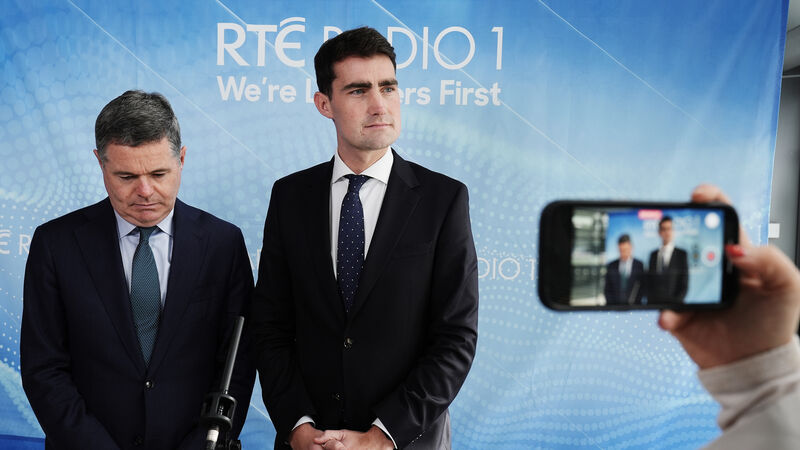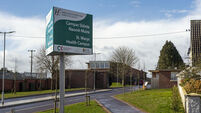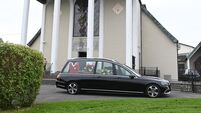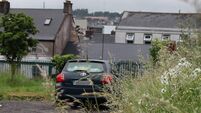Budget 2026 preview: Government looks for the middle path

Minister for Finance Jack Chambers (right) and Minister for Public Expenditure Paschal Donohoe after Budget 2025: That was a giveaway budget, full of quick wins to try to prime the country to re-elect the Coalition.
Much has been made in recent weeks of a conflict between public expenditure minister Jack Chambers and his Fianna Fáil party colleague Dara Calleary, the minister for social protection.
Mr Calleary, like other ministers, has been told that his demands for additional spending are too high, but in his case the Department of Social Protection is responsible for the most direct spending by the State, at about €26.9bn this year.
While he won’t get his way on everything, his department deals with the most vulnerable people, who are just as exposed in a volatile economy as everyone else, but dependent on the State to help them through it.
While Mr Calleary had been seeking a repeat of last year’s €12-per-week hike on core payments such as pension and jobseeker’s, it now looking closer to €10. And though the bumper bonus of last year has been ruled out, the typical Christmas double payment is likely to be confirmed.
Beyond a general increase, he has said his priority will be on reducing child poverty, with enhanced payments for lone parents, working-poor families, and welfare-dependent families.
While he has mooted a second-tier child benefit payment to streamline existing payments, that has been ruled out for 2026 as the details remain to be worked out.
In the meantime, there is likely to be increases to existing family support payments announced next week.
Carers may also get attention, as a rise in the income threshold for the carer’s allowance means test has been mooted in recent days, which will make it accessible to more families.
While universal cost-of-living measures such as the energy credits of recent years have been ruled out, an increase in access to the fuel allowance access is still likely.
During last year’s election, there was alignment between every party as they all pledged to reduce childcare costs if elected.
With Fianna Fáil and Fine Gael getting the mandate, the pressure is now on to make good.
The goal is that, over the lifetime of this Government, monthly childcare costs per child will be reduced to €200, but just shy of a year into their current run — the Government is faced with a balancing issue.
Tánaiste Simon Harris has warned that there will have to be choices made between lowering costs and increasing places.
“It’s not much use to reduce the price if you can’t get a place” he said.
Earlier this year, children’s minister Norma Foley introduced a cap on childcare fees, with a €295 weekly limit for children attending facilities that are part of the Government’s core funding scheme.
Her focus has now shifted towards more targeted measures aimed the highest-cost creches, which are mostly located in Dublin and the surrounding counties.
However, her department is also having to grapple with a series of creches that are withdrawing from the Government’s core funding scheme and covering costs through higher fees instead.
That means on top of having to handle fees and places, the Government also needs to ensure that the funding scheme can cover costs for childcare facilities, something that certainly will not be done in one budget.
If there’s one area where the Government need to be careful about overheating, it’s housing. We all learned that the hard way in 2008, but history is repeating itself in many ways.
While there is a complex web of factors that is preventing housebuilding from ramping up to the level needed to meet demand, one of the big ones is capacity. From construction workers to materials to serviced land, there are constraints on how much housing can be built at any one time. Pump money into a market like that and you’ll certainly get higher prices, but not necessarily more houses.
What we’ve been experiencing in recent years is Economics 101 — more money gravitating towards supply that can’t keep up with demand equals price rises.
The Government needs to be very careful about making the problem worse by flooding the market with more money, but that’s not easy when targets are being missed. This year’s aim was 41,000 new builds, but estimates suggest that the target will be missed by anywhere between 5,000 and 9,000 homes. If the 2030 goal of 303,000 is missed by the same margin, that’s the equivalent of a whole city’s worth of homes not getting built.
In this budget, the Government is looking to eliminate some of the potential roadblocks in development, but that will also be read as another digout for developers.
At the top of the agenda is cutting the Vat on building apartments from 13.5% to 9%, to incentivise developers into a crucial area of housing that has stalled due to high costs and reduced profitability in recent years.
It seems like the focus will be on new builds, rather than any market-wide supports. It’s expected that the Help to Buy and First Home schemes will be extended again, but Taoiseach Micheál Martin has ruled out extending the schemes to purchasers of secondhand homes.
Where the Government can likely make a big difference is by investing in infrastructure. Serviced land is at a premium in Ireland. Any investment in roads, water and waste can all be read as investments in housing, coupled with other ongoing measures to rezone land.
The only other major intervention that might be changed is the renter’s tax credit. Based on the Government’s rhetoric and it now being baked into prices, it’s certain that this will continue, but the question is whether it will be increased.
Standing at €1,000 per person, it may rise this year. However, there has been some talk of targeting the measure on those renting apartments, where the 2% cap on annual rent increases is set to expire on any new-build apartments from next March.










 App?
App?





